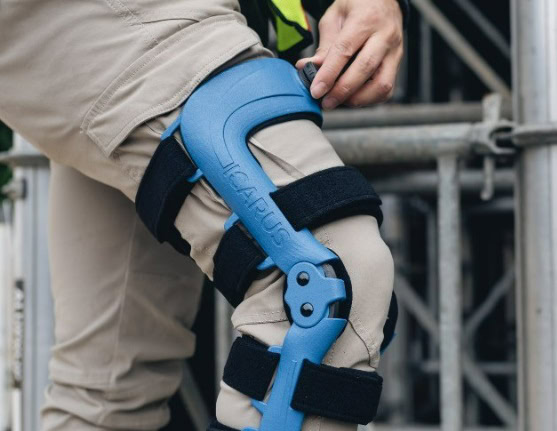The Benefits of Recovery at Work

The Benefits of Recovery at Work
Around 20 years ago, I injured the anterior cruciate ligament (ACL) and the medial ligament (ML) in my right knee. The treatment for this involved three months in a knee brace with the knee locked in place, followed by three months of rehab in the gym, followed by surgery, then three more months in the knee brace. The whole ordeal lasted about a year before I was back to playing sport. Five years later I suffered the same injury playing touch rugby, and instead of redoing the surgery, I opted to stop playing any sport involving a twisting strain on the knee and took up cycling. The thought of going through the year long process again was too much to even contemplate.
Fast forward 20 years, and my son-in-law suffered the same injury playing football. This time the treatment was very different. The medical advice was to do nothing. No knee brace, no surgery, just use the knee as much as you can, and it will heal itself over time. The more you use the knee in a limited capacity, the faster it heals, and the less impact it has on your life.
I was contemplating this fact when I heard on the radio some sobering news from ACC. Current claims will exceed income from levies this year, to the tune of several billion dollars. To match the shortfall, levies will have to rise 25% from their current levels. A large proportion of this is long term injuries, where workers are off work for extended periods of time.
The recovery while maintaining activity works for work related injuries as well. The standard approach has been for the employee to stay home and rest until fully healed before returning to work. However, more and more businesses are now embracing “recovery at work” programmes that allow injured workers to return to work earlier, with modified duties and support. And research shows there are significant benefits to this approach for both employees and employers.
Studies have found that injured workers who participate in a recovery at work programme and return to work as early as possible tend to recover more quickly and successfully compared to those who stay home until 100% healed. Maintaining a work routine and normal activities can boost physical and mental wellbeing during recovery. Workers in recovery at work programmes are more likely to return to their pre-injury duties and less likely to experience re-injury or long-term impairment.
Beyond just physical healing, injuries can take a toll on mental health – especially when they require extended time away from normal routines and social connections at work. Feelings of isolation, lost identity/purpose, and financial stress are common. Participating in a recovery at work programme provides valuable mental health benefits by allowing injured employees to maintain a sense of normalcy, productivity, and social interaction. This can bolster self-esteem and stave off depression during a difficult time.
.
Having to recover alone at home can feel isolating and stressful. Continuing to interact with co-workers and managers regularly, even in a modified capacity, allows injured employees to still feel like part of the team. Employers can demonstrate care and support for workers during the recovery process. Regular communication and a supportive, accommodating approach make a big difference for injured employees.
From a business perspective, recovery at work programmes help organisations retain valued employees and their skills and experience. Without support to return to work, some injured employees may end up leaving their jobs. By accommodating injured workers, employers can retain key talent.
For all these reasons, the Canterbury Safety Charter strongly encourages all members to investigate and implement recovery at work programmes as part of a proactive and supportive approach to helping injured employees. Reaching out to workers early to develop a collaborative return-to-work plan provides great benefits for their recovery and long-term wellbeing. A win-win for all.